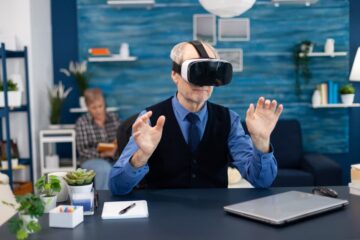The Evolution of Laptops: A Comprehensive Overview

Introduction
In the fast-paced world of technology, laptops have become an indispensable part of our daily lives. These portable computing devices have undergone significant transformations since their inception, continually adapting to the changing needs of users. From bulky and heavy machines to sleek, lightweight marvels, laptops have come a long way. In this article, we will delve into the evolution of laptops, exploring their history, advancements, and their current state in the market. Read more techniclauncher.
Early Days: The Birth of Laptops
The concept of a portable computer dates back to the 1970s when engineers and researchers began envisioning a device that could provide computing power on the go. However, it wasn’t until the 1980s that the first commercially successful laptop, the Osborne 1, was introduced. Despite its hefty weight and limited capabilities by today’s standards, the Osborne 1 set the stage for future developments in portable computing.
The 1990s saw the rise of several notable laptop models, including the IBM ThinkPad and the Apple PowerBook. These machines introduced innovations such as color displays, improved processing power, and enhanced portability. As technology continued to advance, laptops became more accessible to a broader audience, and their popularity skyrocketed.
Advancements in Design and Portability
The 2000s marked a significant shift in the design and portability of laptops. The introduction of ultrabooks, characterized by their slim and lightweight form factors, revolutionized the industry. Companies like Apple, with the MacBook Air, and other manufacturers started prioritizing aesthetics without compromising performance. The integration of solid-state drives (SSDs) further enhanced speed and responsiveness while reducing the overall weight of the devices.
Additionally, advancements in battery technology extended the battery life of laptops, addressing one of the longstanding challenges faced by portable computers. Longer battery life allowed users to work on their laptops for extended periods without being tethered to power outlets.
Performance and Processing Power
The continuous demand for improved performance has driven manufacturers to develop more powerful laptops. The introduction of multicore processors, dedicated graphics cards, and higher RAM capacities has significantly increased the processing power of laptops. This has not only benefited traditional users like business professionals but has also catered to the needs of gamers, content creators, and other power users.
The gaming laptop market, in particular, has witnessed substantial growth, with laptops featuring high-refresh-rate displays, advanced cooling systems, and powerful GPUs that rival traditional gaming desktops. This convergence of performance and portability has blurred the lines between gaming laptops and desktop PCs.
Connectivity and Expandability
As laptops became more integral to daily life, the need for versatile connectivity options and expandability became apparent. Modern laptops are equipped with a myriad of ports, including USB-C, Thunderbolt, HDMI, and more. These ports facilitate the connection of various peripherals and external devices, ensuring that users can adapt their laptops to different work or entertainment scenarios.
Furthermore, the rise of docking stations and eGPU (external graphics processing unit) solutions has enhanced the expandability of laptops. Users can now transform their slim and portable laptops into powerful workstations by connecting them to external monitors, keyboards, and other accessories through a single docking station.
Operating Systems: Windows, MacOS, and Linux
The dominance of Microsoft Windows in the laptop market has been a constant throughout the years. However, the rise of Apple’s MacOS, known for its user-friendly interface and seamless integration with other Apple devices, has created a substantial user base. The choice of operating system often comes down to personal preference, with Windows excelling in versatility and compatibility, while MacOS is renowned for its design aesthetics and ecosystem.
In recent years, Linux-based laptops have gained traction among tech enthusiasts and developers. Companies like Dell, System76, and Lenovo offer laptops with Linux pre-installed, providing an open-source alternative to mainstream operating systems. This shift highlights the growing demand for customization and flexibility in the laptop market.
The Rise of Chromebooks
In the realm of affordable and lightweight laptops, Chromebooks have emerged as a popular choice. Running Google’s Chrome OS, these devices are designed for users who primarily rely on web-based applications and cloud services. Chromebooks offer a budget-friendly alternative for students, casual users, and those who prioritize simplicity and speed over traditional software compatibility.
Chromebooks have gained traction in education settings due to their ease of use, quick boot times, and seamless integration with Google Workspace. With manufacturers continually improving the hardware and expanding the capabilities of Chromebooks, these devices have carved out a niche in the laptop market.
Future Trends: AI Integration, Foldable Displays, and Beyond
Looking ahead, the future of laptops holds exciting possibilities. Artificial intelligence (AI) integration is expected to play a significant role in enhancing user experience, optimizing performance, and enabling smart features. Laptops may evolve to become more intuitive and adaptive, learning from user behavior to anticipate needs and streamline tasks.
Foldable displays, inspired by advancements in smartphone technology, could revolutionize the form factor of laptops. Foldable laptops would offer users the flexibility to switch between a compact, portable mode and a larger, more immersive display for productivity or entertainment purposes.
Conclusion
The journey of laptops from their humble beginnings to the sophisticated and powerful devices we have today is a testament to the rapid evolution of technology. As laptops continue to adapt to changing user demands, the future promises even more innovations. Whether it’s the seamless integration of AI, the development of foldable displays, or unforeseen breakthroughs, laptops are sure to remain a vital tool in our ever-connected and dynamic world. See more techhoa.
Leave a reply
You must be logged in to post a comment.








